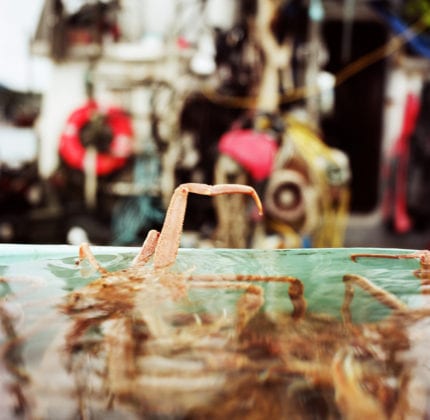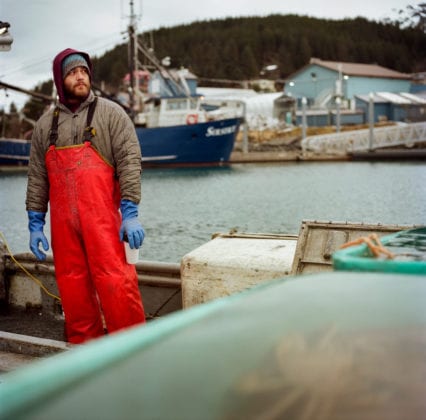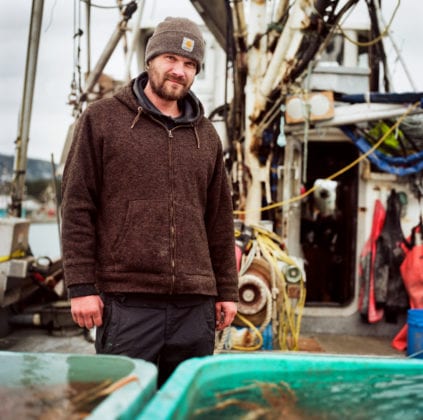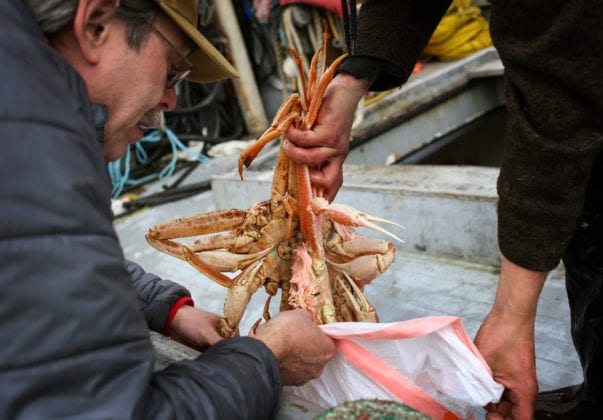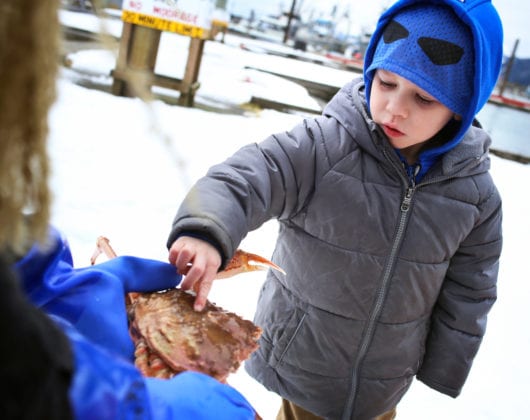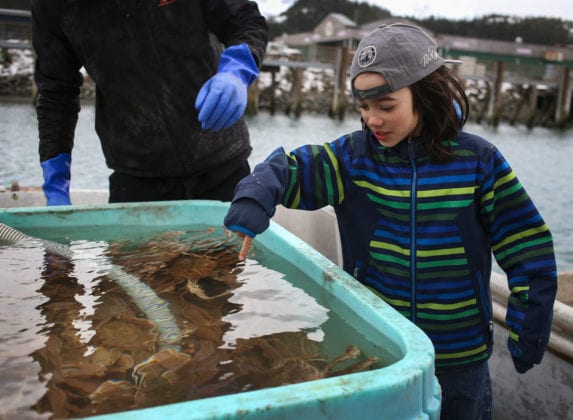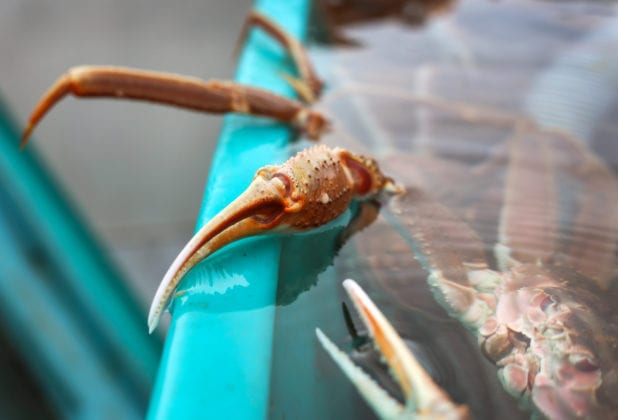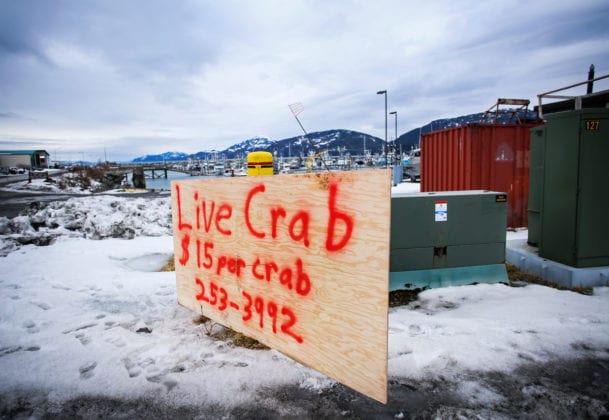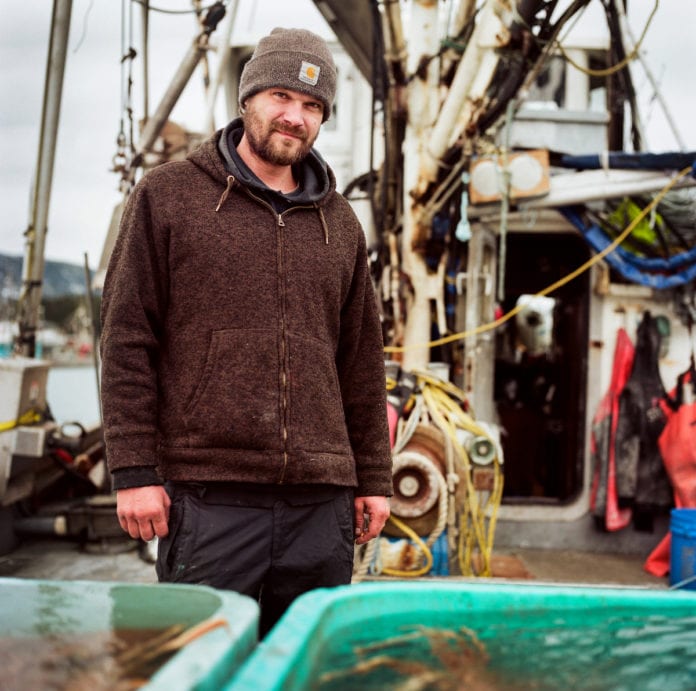
Plenty of fresh shell crab are showing up in pots in the 2019 Prince William Sound Commissioner’s Permit Tanner crab fishery, at an average weight of 1.8 pounds, says Cordova harvester MaKena O’Toole.
That’s the good news in this second year of the fishery, which had 11 vessels making 15 landings through March 11, with a harvest of 16,850 crab weighing 28,699 pounds, according to the Alaska Department of Fish and Game.
Jan Rumble, groundfish/shellfish area manager for ADF&G for Prince William Sound and Cook Inlet, noted that the overall catch per unit effort for the fishery for that period was 14.34 crab per pot.
Rumble also said that the first week of the fishery, which opened March 1 and runs through March 31, was more spread out than last year, and not as focused on one statistical area, with 10 statistical areas fished through March 11.
O’Toole, one of five Cordova area participants in the fishery, was upbeat about the abundance of fresh shell crab, some of which has been sold to Trident Seafoods in Cordova for a price not yet announced, but said weather conditions have not helped.
“It’s been horrible weather,” he said. “We have lost half the season so far. It’s been unfishable.”
Last year, by comparison, the weather was a lot nicer, he said.
Another difference is that participants this year are allowed 25 pots on their fishing vessels, compared to 50 pots a year ago.
“We’re talking about a huge area,” O’Toole said.
Trying to figure out how much crab is out there is pretty hard to do with short seasons, bad weather and a limit of 25 pots, he said.
Meanwhile deliveries have occurred in Cordova, Seward and Whittier, with most deliveries sampled by ADF&G to collect biological information and to confirm the legality of harvested crab, Rumble said.
Mandatory call-in compliance has been good, allowing biologists to track the harvest itself and the harvest effort, she said. The fishery is being closely monitored via the call-in reports and deliveries for the next weeks to determine if any management action is necessary, she said.

